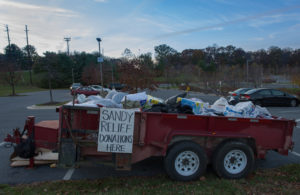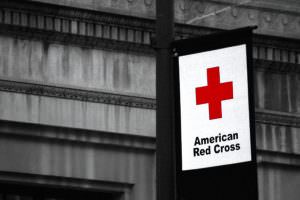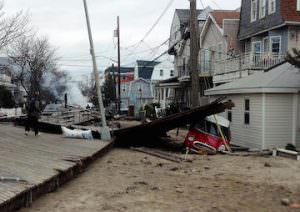Keeping the Storm at Bay
Here's a proposed initiative for the next administration: Get the nation started on the surge barriers, flood walls and other big infrastructure projects that can protect our coastal cities from being ravaged by the next Hurricane Sandy.NEW YORK — Let me propose an initiative for the next administration, starting with Day One: Get the nation started on the surge barriers, flood walls and other big infrastructure projects that can protect our coastal cities from being ravaged by the next Hurricane Sandy.
Here in the nation’s biggest and most vibrant city, last week’s hurricane is a bigger story than this week’s presidential vote. Manhattan seems mostly back to normal, if you don’t look up at the huge construction crane still dangling above West 57th Street. But in parts of the “outer boroughs” — a term that has come to mean “forgotten places” — there is post-apocalyptic devastation.
Some seaside neighborhoods in Queens were destroyed. Staten Island was pummeled, as was the Red Hook neighborhood of Brooklyn. Power is still out in these areas, and will be for the foreseeable future. Tens of thousands of New Yorkers will need temporary housing; for now, many are braving cold nights in unheated, half-ruined homes and apartments.
The destruction was just as great along parts of the New Jersey shoreline. Reporting from flooded New Orleans following Hurricane Katrina, I was confident I would never again witness such scenes of utter ruin in the United States. I was wrong.
Katrina and its sister storm Rita hit the Gulf Coast just seven years ago. Sandy was the second tropical cyclone in two years to hit New York City; Irene, which struck in August 2011, did nearly $16 billion in damage. There’s a pattern here, and it’s not a good one.
According to a 2010 paper by the New York City Panel on Climate Change, a study group commissioned by Mayor Michael Bloomberg, this region has seen nine to 10 inches of sea level rise in the past century. The study projects a further rise of between two and five feet by 2080. Leave aside, for the moment, the question of what’s causing climate change. The inevitable reality is that if we have higher seas and bigger storms, we’re going to have more catastrophic flooding of the kind we saw last week.
We can sit around and wait for it to happen. Or we can begin to protect our cities, using strategies that are already being employed around the world.
In the Netherlands, the port of Rotterdam — as important to the Dutch economy as, say, the New York financial district is to ours — is protected by a giant storm surge barrier consisting of two huge gates that swing shut when needed. Completed in 1997, the Maeslant Barrier was designed to withstand the kind of extreme surge that would occur only once every 10,000 years.
In London, a surge barrier across the Thames River protects low-lying parts of the city from flooding caused by storms and high tides. Given rising sea levels, there are proposals to build a more robust barrier farther downstream.
In Russia, after decades of construction, a system of surge barriers was completed last year to protect St. Petersburg from the frequent floods that have punctuated the city’s history.
Barriers to keep floodwaters out of New York Harbor would be enormously expensive, perhaps costing tens of billions of dollars. But the damage from Sandy is estimated at about $50 billion. Moreover, the city’s prosperity depends largely on its status as one of the world’s pre-eminent financial centers; maintaining that status becomes more difficult if Lower Manhattan is routinely flooded. Take all this into consideration, and surge barriers begin to look like a bargain.
Of course, the next storm might not hit New York. It might hit Boston, Philadelphia, Baltimore, Washington, Norfolk, Charleston, Jacksonville, Miami, Mobile or Houston. Every coastal city, it seems to me, ought to be re-evaluating its system of flood protection with the assumption that what once was a Storm of the Century might now be just a Storm of the Decade.
The vulnerable barrier islands along the East Coast, such as those on the Jersey Shore, will remain vulnerable; there may be little we can do, beyond strengthening building codes. But it seems foolish not to protect our major cities and their harbors. In the final analysis, we’ll be saving not just money but lives.
Great infrastructural projects that are in the national interest, such as the interstate highway system, have been able to garner broad public support — and have helped boost the economy. Here, then, is a project for the young century: Meet the challenge of a rising sea.
Eugene Robinson’s email address is eugenerobinson(at)washpost.com.
© 2012, Washington Post Writers Group
Your support matters…Independent journalism is under threat and overshadowed by heavily funded mainstream media.
You can help level the playing field. Become a member.
Your tax-deductible contribution keeps us digging beneath the headlines to give you thought-provoking, investigative reporting and analysis that unearths what's really happening- without compromise.
Give today to support our courageous, independent journalists.






You need to be a supporter to comment.
There are currently no responses to this article.
Be the first to respond.